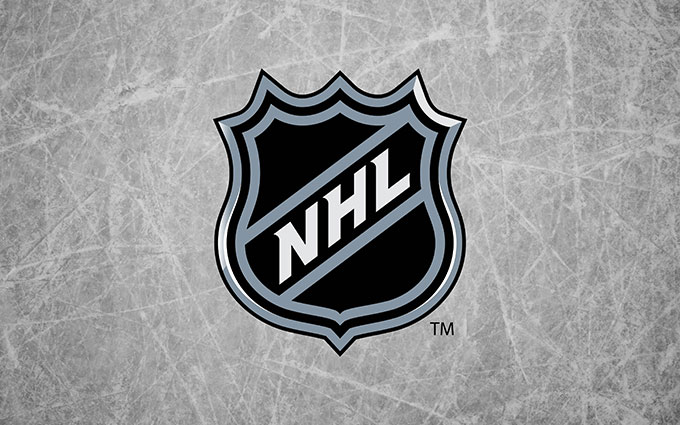This article was written by Mike Laybourne at The4thLinePodcast.com
With lots of talk lately in regards to NHL offer sheets, there seems to be a lot of confusion regarding what teams can and cannot do with offer sheets. Therefore, we bring you the official 4th Line Guide to NHL Offer Sheets.
What is an offer sheet?
Simply put, an offer sheet is a way to either poach a player from another team by offering a better contract, or force that team to spend more than they originally intended to keep the player. Thus eating up more of their cap space.
Sounds straight forward, why aren’t they used more often?
Timing is everything, only players with Restricted Free Agent (RFA) status can be approached with an offer sheet. But first that player must have already received, but not yet accepted an offer from their current team.
Right. Then what happens?
Let’s use St Louis’ Ryan O’Reilly as an example. Back in 2013 when O’Reilly was an RFA playing for the Colorado Avalanche, the Calgary Flames sent an offer sheet. From the date of that offer being received, the Avalanche then had seven days to decide if they wanted match the offer made. In this case the Avalanche matched the offer and O’Reilly stayed in Colorado. Had he not accepted this, he’d have been free to start his new contract with the Flames.
http://gty.im/468974428
If the Avalanche chose not to match the Flames offer, or O’Reilly opted for Calgary anyway, then Colorado would have received some compensatory draft picks.
Compensation eh?
Yup, compensation is received in the form of draft picks, the value of which are determined by the average yearly salary of the player’s contract. Those picks have to belong to the team gaining the player i.e. they can’t be picks that were acquired in previous trades. The number of picks given away depends on the total compensation to the player, divided by the length of their contract, or five years, whichever is lower. Don’t ask why five years was chosen as I don’t know. Here are the 2018 values:
| Average Salary | Draft Picks |
| $1,339,575 and below | Nada |
| $1,339,576 – $2,029,659 | Third round pick |
| $2,029,600 – $4,059,322 | Second round pick |
| $4,059,323 – $6,088908 | First & third round pick |
| $6,088,981 – $8,118,641 | First, second & third round pick |
| $8,118,642 – $10,148,302 | First (x2), second & third round pick |
| $10,148.303 and above | First round pick (x4) |
Jumping back to the O’Reilly offer sheet, Calgary’s offer was a 2 year contract worth $10 million. Had Colorado declined to match the offer, they would have received a first and third round pick. Hypothetically, if O’Reilly had signed a 7 year contract, which is the maximum that a player can sign with a new team, at the same $5 million per season, the total value would be $35 million. As it is longer than 5 years, it would have been divided by 5 to give a compensation value of $7 million, netting the Avalanche first, second and third round picks had the hypothetically not matched this hypothetical contract.
How many offer sheets have ever been signed? And how many were/weren’t countered?
According to the fine folks at Wikipedia, 34 offer sheets have been signed, 12 of which were not matched. These were Gary Nylund (Toronto to Chicago), Scott Stevens (Washington to St. Louis), Glen Featherstone and Dave Tomlinson (St. Louis to Boston – same deal), Brendan Shanahan (New Jersey to St. Louis), Adam Graves (Edmonton to New York Rangers), Petr Nedved (Vancouver to St. Louis), Mike Craig (Dallas to Toronto), Steven Rice (Edmonton to Hartford), Shayne Corson (Edmonton to St. Louis), Ron Tugnutt (Washington to Ottawa), Chris Gratton (Tampa Bay to Philadelphia) and Dustin Penner (Anaheim to Edmonton).
http://gty.im/107133502
20 offer sheets were matched by players’ parent clubs; Geoff Courtnall, Michel Goulet, Kevin Stevens, Dave Manson, Teemu Selanne, Kelly Miller, Marty McSorley, Scott Stevens, Stu Grimson, Keith Tkachuk, Joe Sakic, Mattias Ohlund, Sergei Fedorov, Ryan Kesler, Thomas Vanek, David Backes, Steve Bernier, Niklas Hjalmarsson, Shea Weber and Ryan O’Reilly.
Two offer sheets were submitted but were withdrawn or invalidated. Dave Christian was the former, and Craig Simpson the latter.
Can someone still offer sheet Auston Matthews, and why hasn’t Marner received one yet?
Mr. Matthews cannot be offer sheeted, as he accepted a new contract with the Maple Leafs back on the 5th of February. However prior to this, there was a LOT of speculation that Matthews would be the first player to attract an offer sheet since 2013. As for Mitch Marner, well he will be eligible on July 1st, but teams are hesitant because the cost of gaining Marner isn’t just about the cap space that he’ll swallow up, but any offer would have to be comparable to Matthews’, and that’ll see the team that gains Marner surrender four first round draft picks. Alongside Marner there is a bumper crop of players that are RFA’s this offseason that you would have heard about it they played in Toronto as well. Mikko Rantanen, Brayden Point, Sebastian Aho, Matthew Tkachuk, Patrik Laine and Brock Boeser are just of a few of this season’s restricted free agents that could be receiving offer sheets.
With the expected increase in cap space, should we expect to see more offer sheets?
There hasn’t been an offer sheet in nearly six years, so statistically we’re definitely overdue one. That said, the salary cap has risen every season since 2012-13, and teams have been very hesitant to throw offer sheets around. As salary caps increase, so do the contracts that teams are offering, and most teams either promote from within, or make trades for the players they want rather than waiting. Youth systems are also a lot better than they were, so draft picks are arguably a lot more valuable, and to give up a bunch of them is a heavy price to pay.
With the rise of the analytics crowd, do you think we’ll see more offer sheets?
I’d say not, for the same reasons above.
Which player do you think will be next to receive an offer sheet? Let us know!
Which player do you think will be the next to receive an offer sheet?
— The 4th Line Podcast: Writing (@4thLineWriting) February 10, 2019


 NFL
NFL






